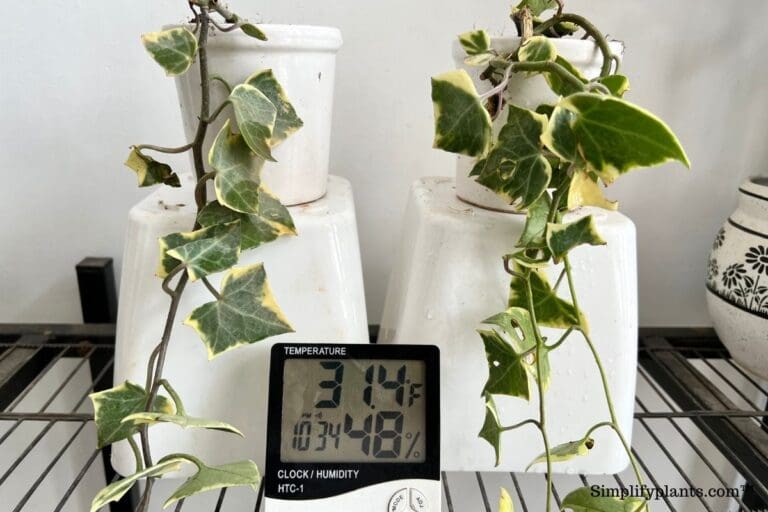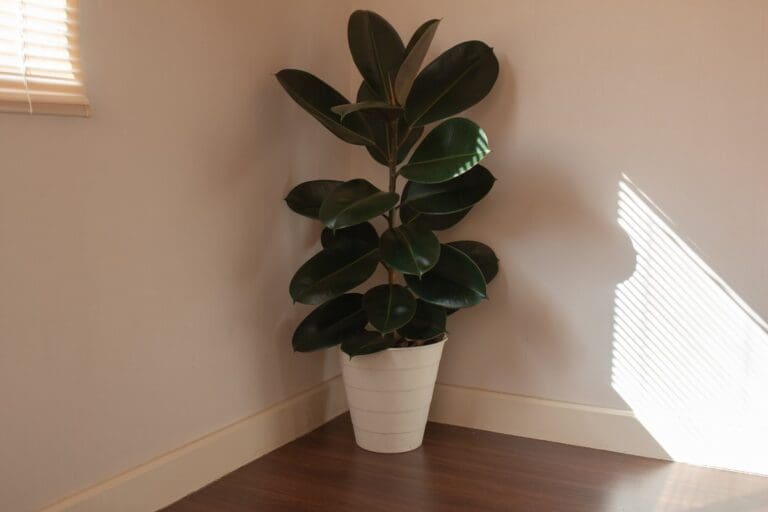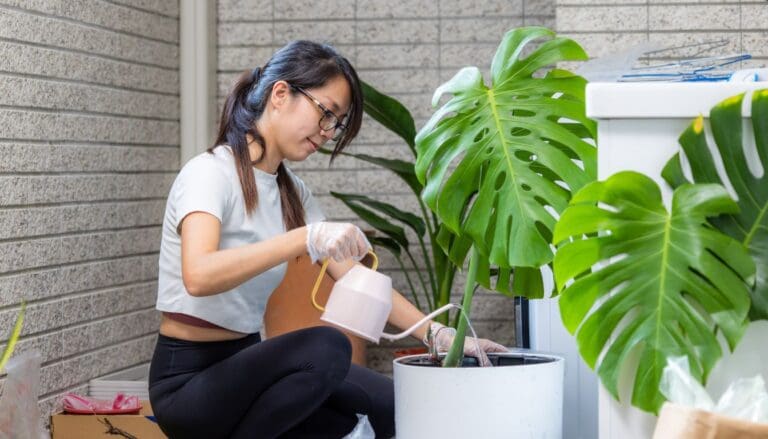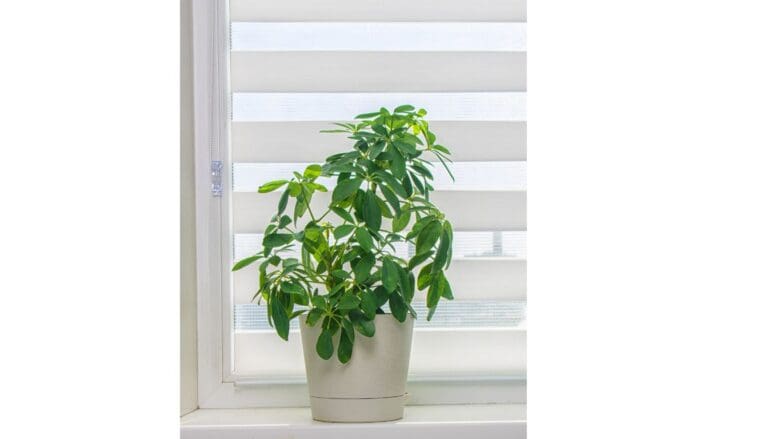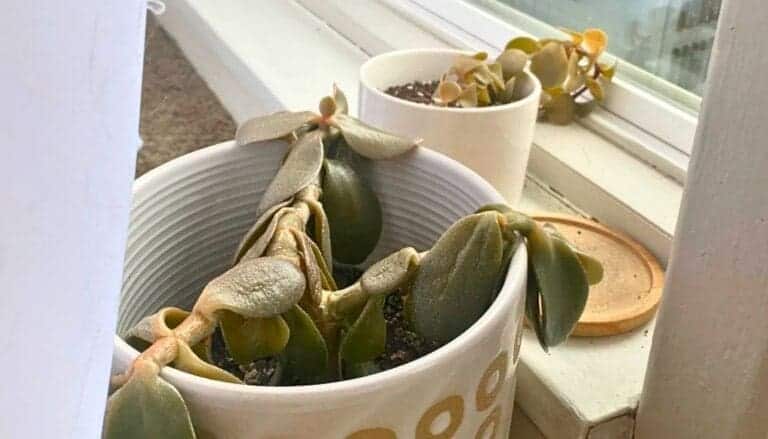8 Tricks to Boost Humidity for Plants in Winter
When winter rolls in and the air gets dry, my plants definitely start to show it.
The leaves lose their shine, and the soil dries out way faster than I’d like.
Honestly, getting the right humidity has been a game changer for keeping my plants strong and healthy.
I’m all about easy, low-cost tricks—nothing too fussy. Even small tweaks in how I care for my plants can really help them thrive through the colder months.
Please note: Simplify Plants is reader-supported. As an Amazon Associate, I earn from qualifying purchases made by our readers with no extra cost added to you all! Some links in the post are affiliate links and I get a commission from purchases made through links in the post.
1) Use a pebble tray with water under plant pots
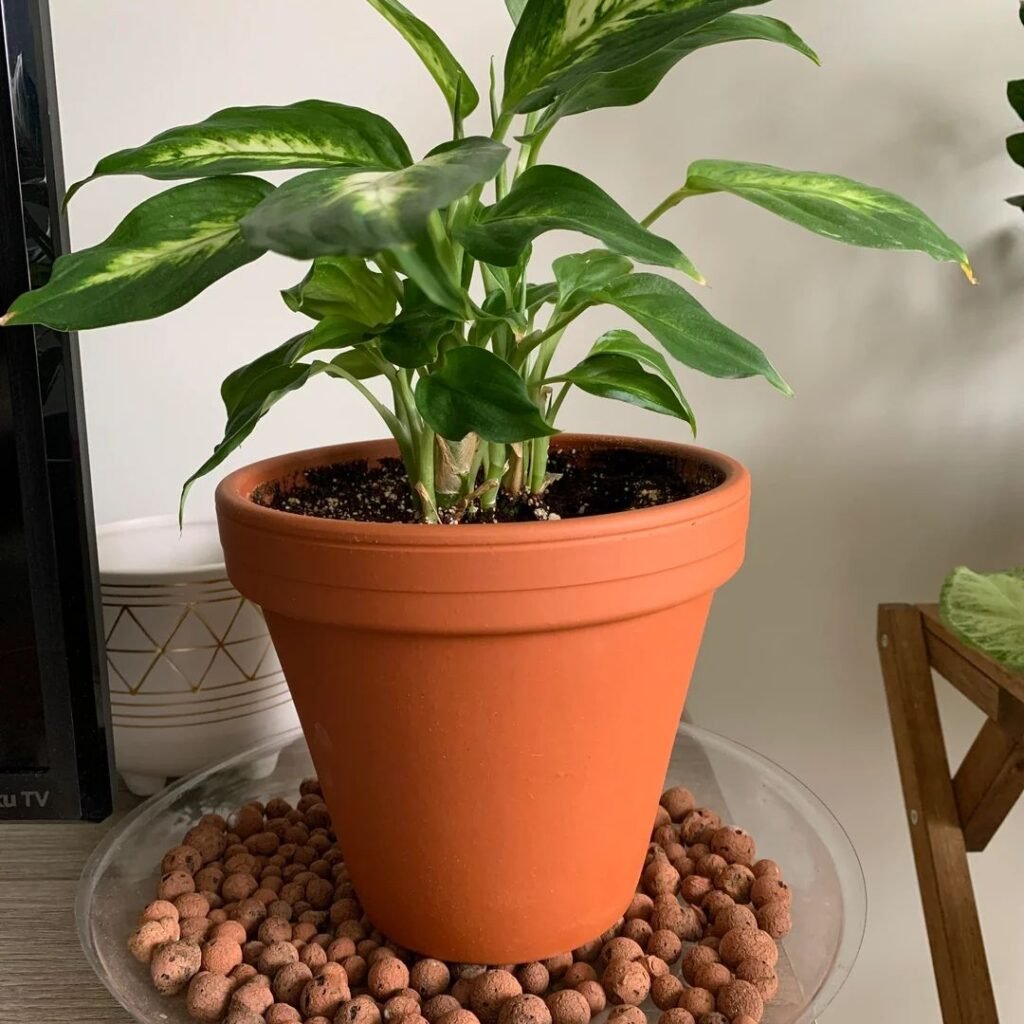
One of my favorite hacks is the classic pebble tray. It’s cheap, quick, and you probably already have what you need.
I grab a shallow tray, toss in some pebbles or stones, and fill it with water—just enough so the water sits below the tops of the pebbles.
The plant pot sits on top, so the roots never touch the water. That way, no root rot drama.
As the water evaporates, it bumps up the humidity right around the plant. It’s a tiny humid zone that really helps during dry spells.
I try to remember to refill the tray every few days, but honestly, sometimes I forget. Luckily, it’s easy to glance and see when it’s low.
Grouping a few plants on trays multiplies the effect. It’s surprising how much that helps!
Plus, it’s easy to move trays around if I get the urge to rearrange my plants. No special gadgets needed.
2) Group plants together to create a micro-humidity zone
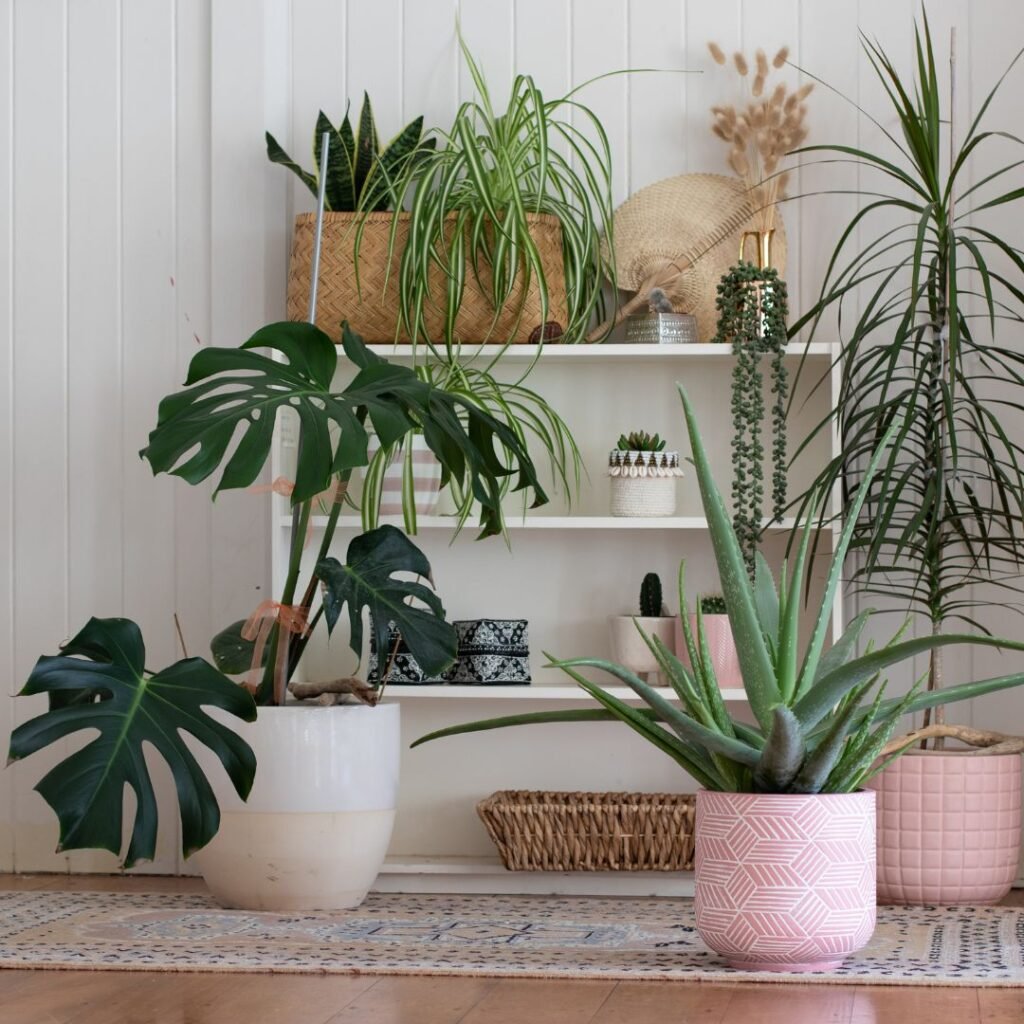
I like to cluster my plants together in winter. The moisture each one releases hangs in the air, turning the spot into a cozy, humid pocket.
They seem to perk up when they share that little bubble. The leaves dry out slower, and I notice I don’t have to water quite as often.
I’m careful not to crowd them too much, though. A little space between pots keeps air moving and helps avoid mold or pest issues.
Usually, I group plants with similar needs. My tropicals stick together, so I can care for them all at once.
A tray or shelf keeps things tidy, and honestly, it just looks good to see a bunch of green in one spot.
Grouping plants is such an easy way to raise humidity without buying anything extra. It works surprisingly well during those dry months.
3) Mist leaves lightly with water in the morning
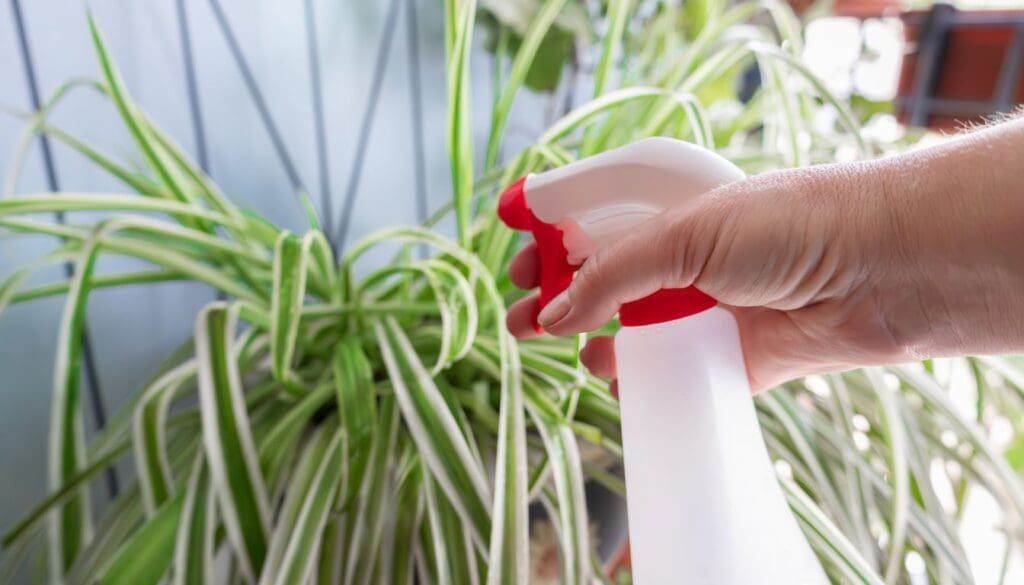
I like to mist my plants in the morning. It’s a quick way to give them a little humidity boost, and the leaves look happier after.
Misting in the morning is best because the leaves have all day to dry out. Wet leaves overnight? That’s a recipe for mold or mildew—no thanks.
I use a basic spray bottle with room-temp water, holding it back so the mist falls gently. A gentle mist is all you need; heavy sprays just make a mess.
Not every plant loves misting, though. Plants with fuzzy or thick leaves usually aren’t fans. I stick to misting my tropicals that actually enjoy extra moisture.
Honestly, misting isn’t magic, but it’s a nice, quick ritual—and I swear I see the leaves perk up right away.
4) Place a humidifier near your plants
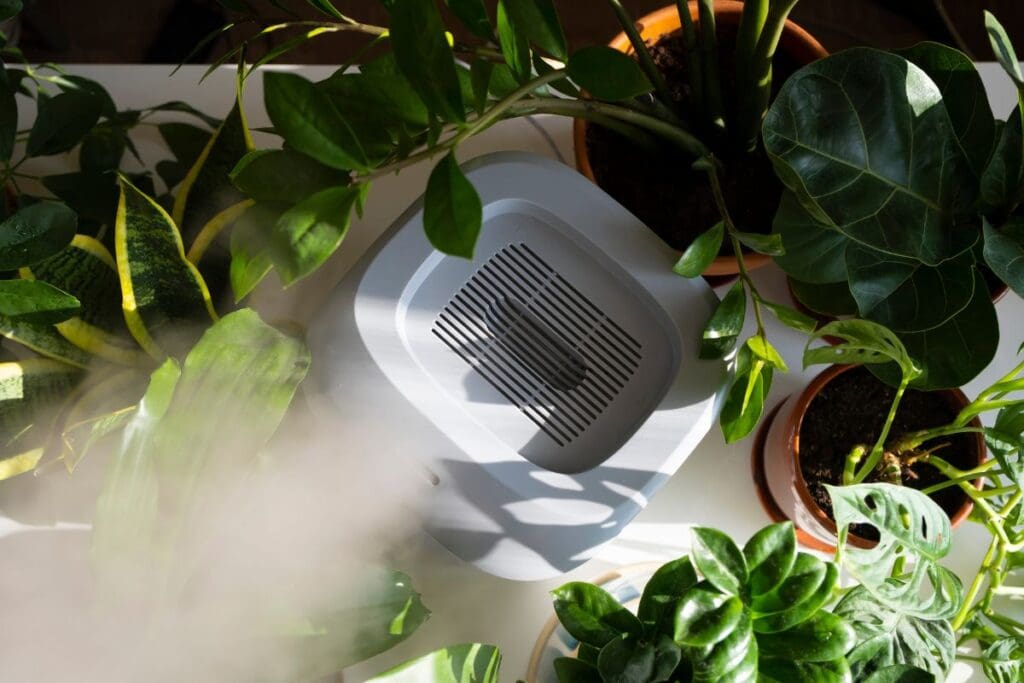
A humidifier is probably the most reliable way I’ve found to keep my plants happy in winter. It gives me control over the air’s moisture, which is pretty handy.
When I run one nearby, the leaves stay fresher and don’t dry out as fast. It’s like bringing a bit of the tropics indoors.
I try to keep the humidifier close enough for the plants to benefit, but not so close that it’s raining on them. Too much direct mist can cause problems.
I clean my humidifier regularly—otherwise, it gets gross with bacteria and mineral buildup. That’s not good for plants or people.
Running it for a few hours a day makes a noticeable difference. It’s one of those things I wish I’d started sooner.
5) Cover plants with a clear plastic dome occasionally

Sometimes I’ll use a clear plastic dome to trap moisture around a plant. It’s like a mini greenhouse, and it works, but I don’t leave it on too long.
A few hours or overnight is usually enough. Any longer, and it can trap too much moisture and invite mold or rot.
I poke a few air holes or just prop the dome up a bit so air can still move. No one wants a steamed plant.
This trick is best for smaller plants or seedlings. Bigger plants? Not so much—they’re tough to cover.
Honestly, I just reuse clear containers or cut-up bottles. No need to buy anything fancy.
6) Use self-watering pots with built-in reservoirs

Self-watering pots are a lifesaver in winter. The built-in reservoir keeps the soil moist, so I don’t have to water as often.
When the soil stays evenly moist, there’s a bit more humidity around the plant. It’s subtle, but it helps, especially when the heat is blasting indoors.
These pots also help prevent overwatering and underwatering. The plant takes what it needs, and the roots aren’t sitting in soggy soil.
If I forget to water, the reservoir has my back. That little safety net is such a relief when life gets busy.
7) Set up a water fountain nearby for ambient moisture
A small indoor fountain is a fun way to boost humidity and add a calming vibe. The moving water slowly adds moisture to the air, which my plants seem to appreciate.
I put the fountain close enough for the plants to benefit, but not so close that water splashes into the pots. No one wants soggy roots.
Fountains do need regular refilling since the water evaporates. I just check every few days and top it off.
The best part? The fountain works all day without me having to remember anything. It’s a steady source of moisture, and my plants seem to handle winter air better with it running.
8) Add sphagnum moss around the base of plants

I like using sphagnum moss because it holds onto water and releases it slowly. Nestling it around the base of my plants creates a little humid microclimate right where they need it.
I only dampen the moss lightly—a heavy soak can lead to mold or root rot. A light mist every few days usually does the trick.
The moss also makes my pots look a bit more finished. It covers the soil, which helps slow down evaporation. Soil stays damp a bit longer, which is always a win.
Plants with moss around the base just seem fresher in winter. It’s a simple thing, but the difference is clear.
I check the moss often. If it’s dry, I mist it; if it’s soggy, I let it air out. Easy enough.
This works best for smaller indoor plants, especially moisture lovers. It’s a low-effort way to boost humidity right where it counts.
Why Humidity Matters for Indoor Plants
I’ve noticed my plants always grow better when there’s enough moisture in the air. Dry air stresses them out, but balanced humidity keeps leaves, roots, and even flowers in good shape.
Common Signs of Low Humidity Stress
When things get too dry, I start spotting crispy leaf edges or brown tips. That’s usually the first warning.
Sometimes, I’ll see wilting even if the soil is still moist. The plant just can’t keep up with water loss.
Leaf drop is another red flag. Some plants shed leaves to protect themselves from super dry air.
Here’s my quick checklist:
- Brown tips on leaves
- Wilting even after watering
- Leaf curling or dropping
- Slow growth
If I spot these signs, I know it’s time to focus on boosting humidity—not just dumping more water in the pot.
How Winter Affects Indoor Air Moisture
Every winter, I can’t help but notice how the air inside my home dries out. Heaters just seem to pull all the moisture right out, and my poor plants definitely feel it.
Cold air from outside doesn’t hold much water vapor in the first place. Once it comes inside and warms up, the humidity drops even more—sometimes way more than I’d expect.
Take air at 30°F with 70% humidity. When it’s heated to 70°F indoors, it ends up at just about 12% humidity. That’s seriously dry for most houseplants—kind of shocking, honestly.
Tropical plants in particular seem to struggle in winter. They’re used to humidity around 50–60%, but inside, it often dips below 20%.
No wonder they look a bit stressed out when the heater’s running all day.
Maintaining Healthy Humidity All Season
To keep my plants happy, I make a habit of checking the air moisture often. I’m careful not to overdo it with watering, though—I’ve learned that lesson the hard way.
It’s a balancing act to avoid dry leaves, mold, or root problems.
Monitoring Humidity Levels Effectively
I rely on a digital hygrometer to track humidity at home. It’s just easier to have a number to go by instead of guessing.
My goal is to keep things between 40% and 60% humidity, since that’s the sweet spot for most houseplants.
I set the hygrometer near my plants, but not right next to the humidifier or heater. That way, I get a better sense of what my plants are actually experiencing.
If I see the humidity dip below 40%, I’ll switch on a humidifier or bunch the plants closer together. On the other hand, if it creeps above 60%, I’ll crack a window or run a fan—nobody wants mold.
It’s a relief not to have to guess, and I can usually catch problems before my plants start to suffer.
Balancing Humidity Without Overwatering
I have to remind myself—humidity and watering aren’t the same thing. Dry air doesn’t mean the soil needs more water, and too much can lead to root rot, especially in winter.
So, I focus on the air. A pebble tray with water under the pot or a small humidifier nearby works wonders without turning the soil soggy.
I always check the soil with my finger before watering. If the top inch is dry, then it’s time. If it’s still damp, I wait it out a bit longer.
Keeping air moisture and soil moisture separate has saved me a lot of headaches.
Frequently Asked Questions
When it comes to keeping plants comfy in dry winter air, I stick to simple tricks. Pebble trays, humidifiers, and even grouping plants together can really help boost the moisture indoors.
How can I increase humidity for my indoor plants during the cold months?
I keep bowls of water near heaters, run a humidifier, and cluster my plants together. It’s not fancy, but it works for me and keeps them looking much happier.
What are some effective DIY methods to create a more humid environment for houseplants?
I put pots on pebble trays filled with water, group plants, and sometimes use a clear plastic dome for short stretches. These little hacks don’t cost much and are perfect for small spaces.
Can misting help improve humidity levels for my plants in winter, and how often should I do it?
I mist leaves lightly in the morning so they have time to dry out before night. I don’t go overboard, since too much misting can cause mold if the air stays damp.
Are there any particular plants that can help raise the humidity level for other plants?
Absolutely—some plants with big leaves release more moisture. Ferns, peace lilies, and spider plants are my go-tos for naturally boosting humidity around the others.
What are the signs that my plants are suffering from low humidity?
Brown leaf tips, curling leaves, and dry soil that dries out too fast are my warning signs. If I see these, I know the air’s just too dry for my plants.
How can I use a humidifier to benefit my plants, and what type should I look for?
I usually set a small cool-mist humidifier close to my plants and let it run for a few hours daily. Honestly, I try to find one that’s simple to clean—nobody wants weird gunk or mineral stuff getting everywhere.
Recommended Garden Supplies
| Product Image | Our Recommended Gardening Supplies | Check Offers! |
|---|---|---|
Top Top
Top
Top
Top
Top
Top
Top
Top | rePotme Houseplant and Tropical Classic Potting Soil Mix | Check Offer On Amazon |
 Top
Top
Top
Top
Top
Top
Top
Top | Espoma Organic Indoor Plant Food | Check Offer On Amazon |
 Top
Top
Top
Top
Top
Top
Top
Top | GooingTop LED Grow Light 6000K Full Spectrum Clip Plant Growing Lamp | Check Offer On Amazon |
 Top
Top
Top
Top
Top
Top
Top
Top | Soil Moisture Meter | Check Offer On Amazon |
 Top
Top
Top
Top
Top
Top
Top
Top | Govee Hygrometer Thermometer, Bluetooth Enabled! | Check Offer On Amazon |
 Top
Top | LEVOIT Humidifiers for Large Room(Best For Plants) | Check Offer On Amazon |
 Top
Top
Top
Top
Top
Top
Top
Top | Upgraded DIY Automatic Drip Irrigation Kit, 15 Potted Houseplants Support | Check Offer On Amazon |
 Top
Top
Top
Top
Top
Top
Top
Top | Stainless Steel Heavy Duty Gardening Tool Set | Check Offer On Amazon |
 Top
Top
Top
Top
Top
Top
Top
Top | Bonide Insecticidal Soap | Check Offer On Amazon |
 Top
Top
Top
Top
Top
Top
Top
Top | Bonide 32 oz Spray Neem Oil for Organic Gardening | Check Offer On Amazon |
 Top
Top
Top
Top
Top
Top
Top
Top | Garden Safe Fungicide | Check Offer On Amazon |

